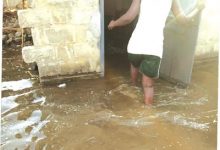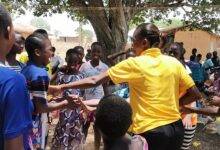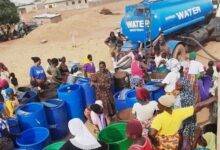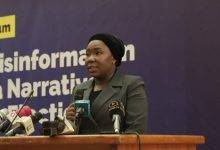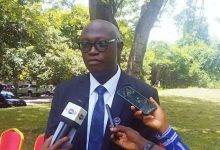Illegal mining activities are affecting the production of quality water at the Daboase Water Treatment Plant in Wassa East District, the Western Regional Chief Manager of Ghana Water Company Limited (GWCL), Francis Agyei-Boateng, has lamented.
He said galamsey activities increased cost in water treatment and also maintenance regime and called for a collective national action to stem the canker.
Mr Agyei -Boateng expressed these sentiments when the Minister of Sanitation and Water Resources, Ms Cecilia Abena Dapaah, led a government delegation to assess the water situation at the Daboase Treatment Plant on Monday.
He added: “Galamsey on River Pra is affecting our operations, and, therefore, we are not getting the required water supply. The effect of galamsey on our operation at Daboase treatment plant is serious.”
“The implication is that we use chemicals, that is alum, to treat water and there is also siltation at the intake station and water from upstream get agitated and we are not able to abstract enough water, leading to frequent maintenance and higher additional cost due to galamsey which impacts on our operations.”
Mr Agyei- Boateng told the delegation that the Inchaban plant was about 100 years old while the Daboase one was about 62 years old, stating that both installations had outlived their designed capacity.
Daboase plant, he said, had installed capacity of about 27, 000 cubic metres, that is about six million gallons, but now produced averagely four million gallons daily while the Inchaban plant also produced two million gallons daily, instead of four million, explaining that both now served Sekondi- Takoradi with six million gallons daily.
“The total capacity for both plants is about 10 million gallons daily, but, due to the losses of efficiency we produced four million gallons. Already, we have 50 per cent loss of that. Demand is increasing and the supply gap is so big,” he said.
The Chief Manager called on Ghanaians to support government’s efforts to check illegal mining activities, particularly, Pra River, saying that “we all have a role to play by becoming citizens and not spectators,”
The Executive Secretary of the Water Resource Commission (WRC), Dr Benjamin Ampomah, spoke about the commission’s monitoring activities and mentioned that anytime galamsey activities peaked on Ghana’s water bodies, turbidity increased.
Between 2013 and 2016, he said the commission began taking data which indicated that turbidity in the first quarter of 2017 was low.
However, in the third quarter of 2018 after the ban on galamsey was lifted, turbidity increased.
Dr Ampomah continued: “In 2019 values were stable but during the first quarter of 2020, we got increases.”
The Managing Director of GWCL, Dr Clifford Braimah, described the tour by stakeholders to water installation in the Western and Central regions as heartwarming and hoped that it would provide more insights into galamsey activities which hampered the company’s operations.
“We have complained several times to the sector minister. This time, we have policy makers and regulators to come and have the opportunity to ensure that Ghanaians join the fight against galamsey. This struggle is not for President, ministers or the government. It affects us all,” he noted, stressing “If we go into our homes and not getting water we should think about galamsey.”
The Information Minister, Kojo Oppong Nkrumah told journalists that the visit followed the President’s directive for the various stakeholders to work with GWCL to take baseline information on water bodies in the two regions.

